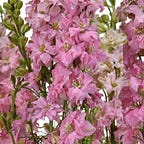Pantoum and Syntax
A pantoum is a Malaysian form of poem that consists of a number of rhyming quatrain stanzas. According to American poet John Hollander, “The pantoum comes, through French … from Malay (pantun) and is rather like a combination of villanelle with the unfolding motion of terza rima” (Gotera 254). In other words, a pantoum poem has a lot of movement to it in the sense that each line/stanza has its own flow. Malaysian poet Muhammad Haji Salleh defines this form by stating “A pantun [a pantoum poem] is a quatrain with an abab rhyme … The first two lines prepare us in image, sound, and suggestion for the meaning proper in the last two” (Gotera 254). From these two excellent definitions of a pantoum, we can conclude that it is a type of poem that sets the mood, imagery, and meaning of a poem in just four stanzas.
An example of a pantoum that perfectly exemplifies the form is a pantoum written by Malaysian-American poet Shirley Geok-Lin Lim titled “Pantoum for Chinese Women.” Pantoums have a lot of visual and sound imagery that can be used to identify meaning and we see that in the first two lines of the fourth stanza of the poem: “His mother, squatting, coughs by the fire’s blaze./ The child kicks against me mewing like a flute” (Gotera 261). This is a perfect example of how the visual and sound imagery used in a pantoum can contribute so highly to the meaning of the pantoum. From the mother coughing up ash to the smoke from the fire and the child kicking and screaming, we know that the tone is rather violent and dark. It shows how they are going through hell and are in a danger zone that they can’t seem to escape.
Another example of visual imagery occurs in Robert Hass’s A Little Book on Form, in a stanza from a neoformalist pantoum inspired poem by T.S. Eliot titled, “Sweeny Among the Nightingales.” “The circles of the stormy moon/ slide westward toward the River Plate./ Death and the Raven drift above,/ and Sweeney guards the horned gate” (Hass 89). This perfectly exemplifies how visual imagery can be used in a pantoum to help define its meaning. From using the imagery a raven — which is actually a very well-known symbol of death — and the horned gate — which might be the gate to hell — shows that this poem is about the dark truth of death.
Lim, Shirley Geok-Lin. “A Pantoum for Chinese Women.” An Exaltation of Forms: Contemporary Poets Celebrate the Diversity of Their Art. Edited by Annie Finch and Kathrine Varnes. U of Michigan P, 2002, pp. 261.
Eliot, TS. “Sweeny Among the Nightingales.” A Little Book on Form: An Exploration of the Formal Imagination of Poetry. Robert Hass. ECCO, 2018, pp. 89.
